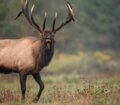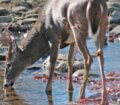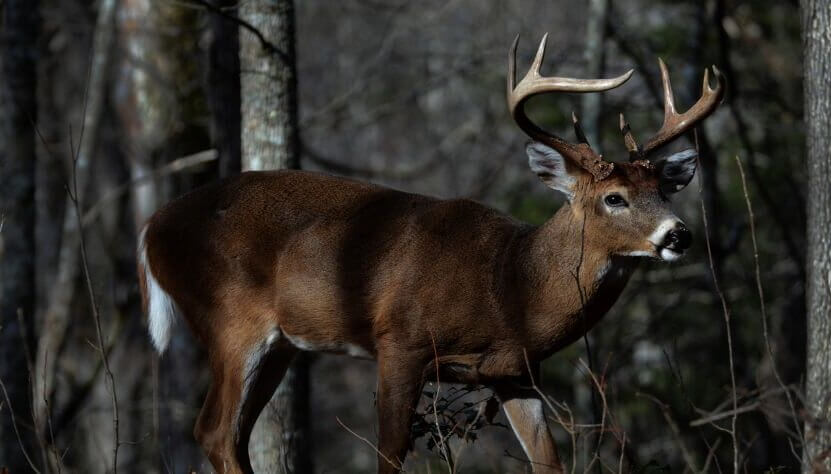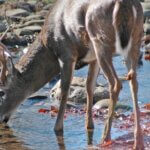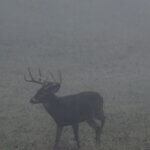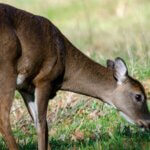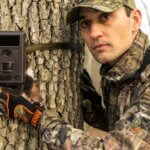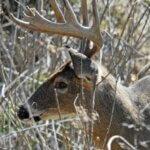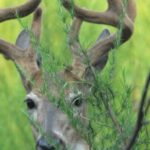Editor’s Note: Deer season starts now. You can improve your chances of taking deer by building stalking trails in pine plantations and using trail/motion sensor cameras. You’ll open-up more land and possibly take bigger bucks on the property you hunt too. Some of the biggest bucks on the land you hunt may live in 2- to 15-year-old pine plantations where the bucks can survive for many years and only come out of the pines when they experience no hunting pressure.
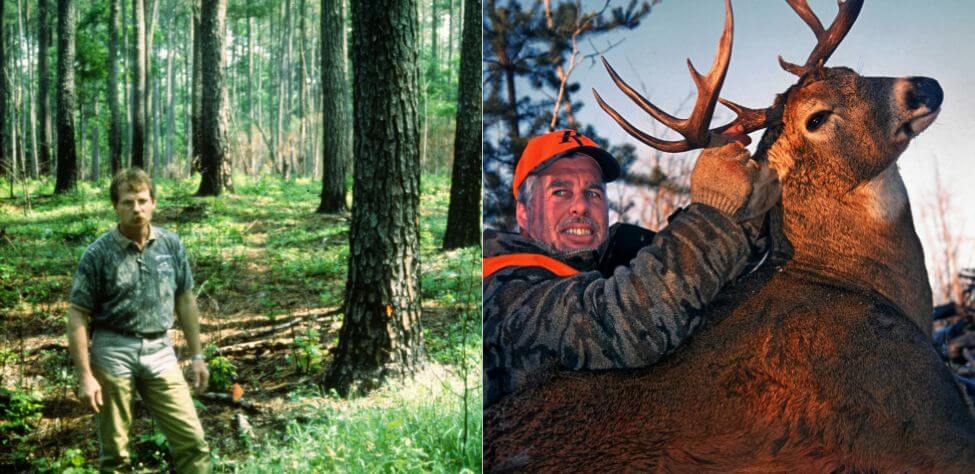
When landowners first plant pines, vegetation will grow-up thick and lush, providing plenty of food and habitat for deer. But you often can’t move through these areas without spooking the deer there. Once you begin to put heavy hunting pressure on the edge of a pine stand where you’ll have to hunt to spot the deer, the older, smarter bucks may remain in that thick-cover area all day and only come out after dark.
To solve this problem for hunters, Mark Thomas, a wildlife biologist and a forester, has developed a stalking-trail tactic that he puts in place before deer season to enable hunters to move through this thick cover quietly and unseen, to hunt it much more intensively than ever before and to increase the food availability for the deer inside the young pine plantation.
“Once you install a stalking trail, you can hunt a pine plantation from the time it’s 3-years old until it’s 22- or 23- years old,” Thomas says. “Work will be required initially to put the trail in, and you may have some annual maintenance on it. However, the benefits of having a stalking trail through a young pine plantation far outweighs the work required.”
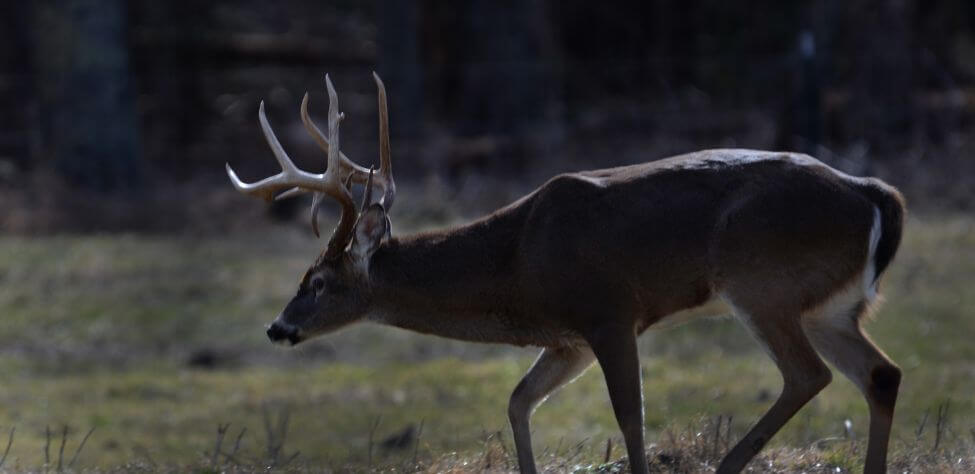
* Understand the Advantages in Having a Stalking Trail to Take Deer: “If you install these stalking trails before deer season, the deer will begin to use them as travel corridors,” Thomas explains. “Before when we’ve installed a stalking trail, we’ve sometimes seen the ground on these trails almost torn-up with deer tracks from the deer traveling these trails.” Too, the stalking trails enable the hunter to move through a previously impenetrable area and spot deer bedding on the sides of the stalking trails as well as feeding in the food plots.
“The installation of a stalking trail through a young pine plantation lets bowhunters, pistol hunters and black-powder hunters stalk in close enough to get off a shot and harvest deer in places they never may have been able to hunt before. Although installing a stalking trail may seem like a lot of work, a buddy of mine and I built a mile-long stalking trail in one morning. Once a trail is built, you should be able to hunt that trail productively for deer for 10 to 20 years.”
Tomorrow: Install Deer Stalking Lanes

How to Hunt and Take Big Buck Deer on Small Properties
In this book, you’ll hear from 14 hunters who either have gained permission or leased properties as small as six acres to as much as 250 acres, and how they consistently take older-age-class bucks off these little lands.
VERSIONS: AUDIBLE, KINDLE & PRINT

Jim Crumley’s Secrets of Bowhunting Deer
Using a black magic marker and a gray work jumpsuit, Jim Crumley of Buchanan, Virginia, drastically changed the nature and purpose of hunting camouflage when he created the first sportsman’s camouflage – Trebark. Crumley’s love of bowhunting and his desire to be more invisible changed hunting clothing forever.
In this hunting guide, he shares the wisdom that he’s learned throughout his lifetime about how to be a hunter, how to find a deer lease, how to scout for deer, and more.
Special features include how to:
- Have a magic 60 acres to hunt
- Decide the best equipment to use
- Find deer year-round
- Locate land to hunt
- Know the best place to put your tree stand
- Get bucks within bow range
VERSIONS: AUDIBLE, KINDLE & PRINT

How to Hunt Deer Like a Pro
How do you know if the land you hunt has a trophy deer on it? Wildlife manager Bob Zaiglin, of Uvalde, Texas and Jim Crumley, the father of modern-day hunting camouflage, tells you how to find out. GPS can make finding and taking that trophy buck easier. This hunting guide will teach you how to hunt big bucks where no one else can find them, how to call deer, and how to become versatile as a deer hunter, so that if one deer tactic doesn’t work, another one will.
In the chapter, “How to find Bucks at Scrape,” Dr. Keith Causey, retired professor of Wildlife Science at Auburn University, describes the best way to hunt a scrape.
Brad Harrison of Neosho, Missouri, is a nationally-known videographer, professional deer hunter and master at calling deer. Another master is Will Primos of Primos Game Calls. These two experts will tell the best deer calls and when to use them in this book.
And for over 20 years, Bo Pitman, lodge manager of White Oak Plantation, has been studying deer movement patterns. He explains what types of conditions are best for predicting deer movement.
VERSIONS: AUDIBLE, KINDLE & PRINT

Deer hunting and deer hunters are drastically changing each year. To learn new techniques for hunting deer and have more places to hunt, I’ve interviewed some of the best deer hunters in the nation and share their tactics in How to Hunt Deer Like a Pro: Volume II.
In Chapter 10, Jacob Lamar tells you his tactics for consistently taking older-age-class bucks on public lands in several states. Chapter 11, Bob Walker explains how to find places on public lands where you can hunt that 99 percent of the other hunters never have considered hunting. The Bonus Chapter with David Ramey tells you how, where, when and with what equipment to take big Kansas bucks on public lands by hunting in 100-degree weather when others won’t hunt.
Chapter 13, Mark Drury, his family and his guests take mature bucks every season by having more small places to hunt rather than one large property. Drury explains the strategy of having satellite farms to hunt that only may be 50-150 acres each or less. Chapter 15, Pat Reeve, who hunts far-northern states and Canada, says, “I don’t like hunting for mature bucks until the weather is 20 degrees or less.” Chapter 4, Dr. Larry Marchinton says that funnels are the most-reliable stand sites to hunt for big bucks and tells why.
VERSIONS: AUDIBLE & PRINT

